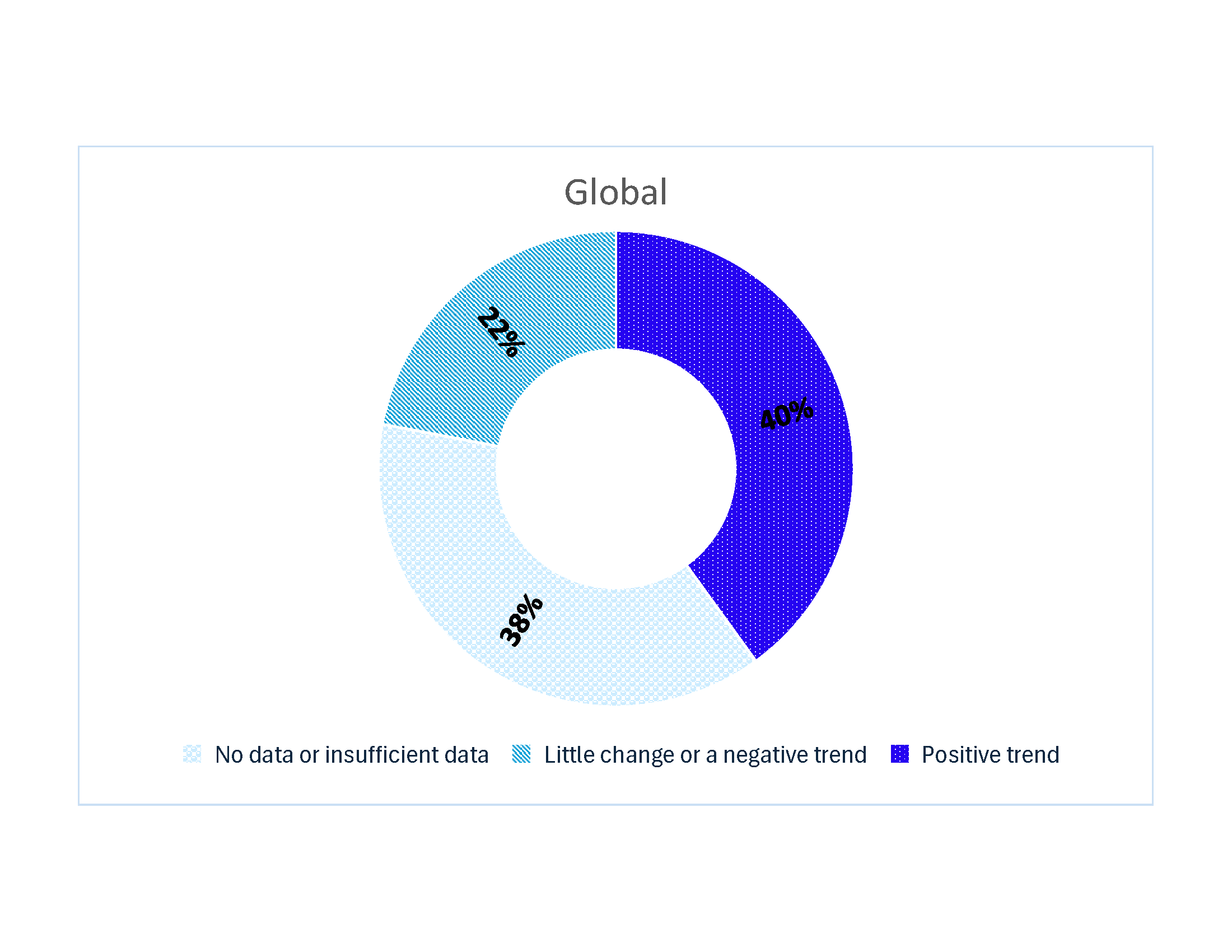This report is the 4th edition of UNEP’s Measuring Progress series. It provides updates on the global progress made towards achieving the environmental dimension of sustainable development. As a special edition, it presents proposed disaggregations for the 92 environment-related SDG indicators and their relevance to national and sub-national evidence-based policymaking coupled with its potential impact on society, the economy and the environment.
Positive and steady improvement in data availability
A global review of the environmental dimension of the SDGs shows that 62 per cent of indicators have sufficient data for analysis of progress as of September 2023. This is a welcome increase from 34 per cent in 2018, 42 per cent in 2020 and 59 per cent in 2022. Increased data availability enables policymakers to make evidence-based and informed decisions.
Analysis reveals data trends towards increased data availability

The percentage of environment-related SDG indicators with no data or insufficient data has steadily decreased over the past five years to 38 per cent in 2023. Many indicators show a shift from no data to some data or from some data to positive or negative trends. In 2018, 18 per cent of indicators showed a positive trend, which has increased to 40 per cent in 2023. The percentage of indicators showing little change or a negative trend increased from 16 per cent in 2018 to 22 per cent in 2023. While a negative trend is not environmentally beneficial, increased data availability is nevertheless a positive development.
Data exists for 80 per cent of environment-related SDG indicators at various levels
For a set of 15 unique SDG indicators, data has never been available at the global level. For 67 per cent of them, national data exists but too few countries are reporting for the data to be aggregated to global level. While 13 per cent of the indicators have never been reported at any level. Seven per cent each are indexes, where global aggregates were not computed by the custodian agencies; have new methodologies and were only reported in December 2023; or are designed to have data at the city level and, therefore, cannot be aggregated. Global data for 12 unique SDG indicators is on the trend of improvement with forthcoming data updates.
Meaningful disaggregation of data leads to better evidence-based policies
Several environment-related SDG indicators have disaggregated data. However, others lack the detailed data and granularity to provide targeted guidance for policymakers. Availability of disaggregated data is crucial for analyzing environmental issues from different angles and for developing evidence-based environmental policies at national and sub-national levels adapted to different contexts and circumstances.
Countries are encouraged to focus on disaggregations that are relevant to their national and sub-national circumstances based on their policy needs as well as statistical systems. Investing in statistical resources to enhance the collection of disaggregated data would offer valuable insights for developing more effective interventions and actions for achieving sustainable development in the national context.


